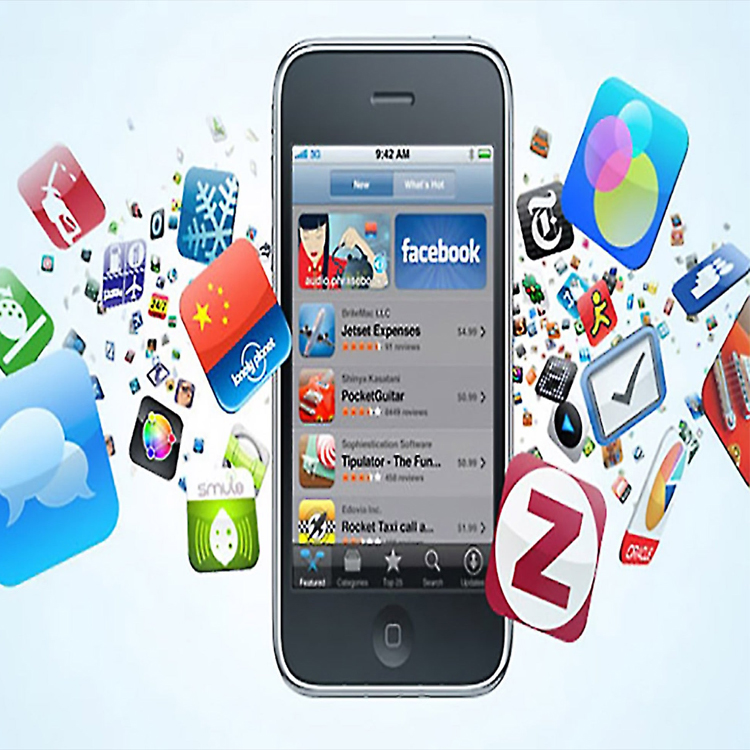In today’s digital age, mastering mobile applications—often referred to as “App Savvy”—is crucial for enhancing personal efficiency and achieving professional success. Navigating the expansive realm of mobile apps requires a strategic approach to harness their full potential. By understanding the diverse functionalities and categories of apps available, individuals can optimize their choices to meet specific needs and goals. Whether for productivity tools, communication platforms, or entertainment purposes, learning to leverage mobile apps effectively empowers users to streamline tasks, stay organized, and stay connected in an increasingly mobile-centric world.

Understanding the Basics of Mobile Apps
What are Mobile Apps?
Mobile apps, short for mobile applications, are software programs specifically designed to operate on mobile devices such as smartphones and tablets. These applications are tailored to perform various functions, ranging from productivity tools like email and document editing to social networking platforms and entertainment apps. Mobile applications are generally acquired and installed directly onto the device via an application marketplace. such as the Apple App Store or Google Play Store, depending on the device’s operating system. They leverage the unique capabilities of mobile devices, such as touchscreens and GPS, to provide intuitive and interactive experiences for users on the go.
Types of Mobile Apps
There are several types of mobile apps that cater to different needs and purposes. Productivity apps, such as task managers and office suites, help users stay organized and efficient. Social media apps, like Facebook and Instagram, facilitate social networking and communication. Entertainment apps offer various forms of amusement, from streaming platforms for music and movies to mobile games. Utility apps provide essential functions like weather forecasts, navigation assistance, and device optimization tools. Each type of app serves distinct functions, enhancing user experience and catering to diverse interests and requirements in the mobile ecosystem.
Key Strategies for Maximizing Mobile Apps
Choosing the Right Apps
Selecting the appropriate apps entails evaluating multiple factors to ensure they match your particular requirements and preferences. Start by identifying the purpose of the app—whether it’s for productivity, social networking, entertainment, or utility. Read user reviews and ratings to gauge the app’s reliability and functionality. Check for compatibility with your device’s operating system and hardware specifications to ensure smooth performance. Evaluate the app’s features and interface to determine if it suits your preferences for usability and design. Lastly, consider any additional costs, such as in-app purchases or subscriptions, and weigh them against the app’s benefits.
Optimizing App Usage
Optimizing app usage involves maximizing the efficiency and effectiveness of mobile applications to streamline daily tasks and enhance productivity. Start by familiarizing yourself with the app’s features and functionalities through tutorials or user guides. Customize settings to suit your preferences and streamline workflows, such as organizing tasks or notifications. Implement time management techniques, like setting reminders and prioritizing tasks, to stay focused and efficient. Regularly update apps to access new features and security patches, ensuring optimal performance.
Exploring Advanced Features
Exploring advanced features within mobile apps allows users to unlock additional functionalities and capabilities that can significantly enhance their experience. These features often include advanced settings for customization, integration with other apps or services, and enhanced security measures. Users can explore options such as advanced editing tools in productivity apps, personalized recommendations in entertainment apps, or integration with smart devices in utility apps. Understanding and utilizing these advanced features not only improves efficiency but also expands the versatility of mobile apps, empowering users to tailor their digital experiences to better suit their needs and preferences.
App Security and Privacy
Ensuring App Safety
Ensuring app safety is paramount in the digital age to protect personal information and maintain device security. Users can safeguard themselves by carefully reviewing app permissions before installation, ensuring they align with the app’s intended functionality. It’s essential to download apps only from trusted sources such as official app stores and to avoid sideloading applications from unknown sources, which may pose security risks. Regularly updating apps to the latest versions ensures access to security patches and fixes for vulnerabilities. Additionally, enabling device security features like passcodes, biometric authentication, and remote device wiping can further safeguard sensitive data in case of loss or theft.
Conclusion, Mastering App Savvy involves understanding the diverse world of mobile applications, choosing wisely, optimizing usage, and ensuring security. By implementing these strategies, users can make the most of their mobile apps, enhancing both personal and professional endeavors significantly App Savvy.